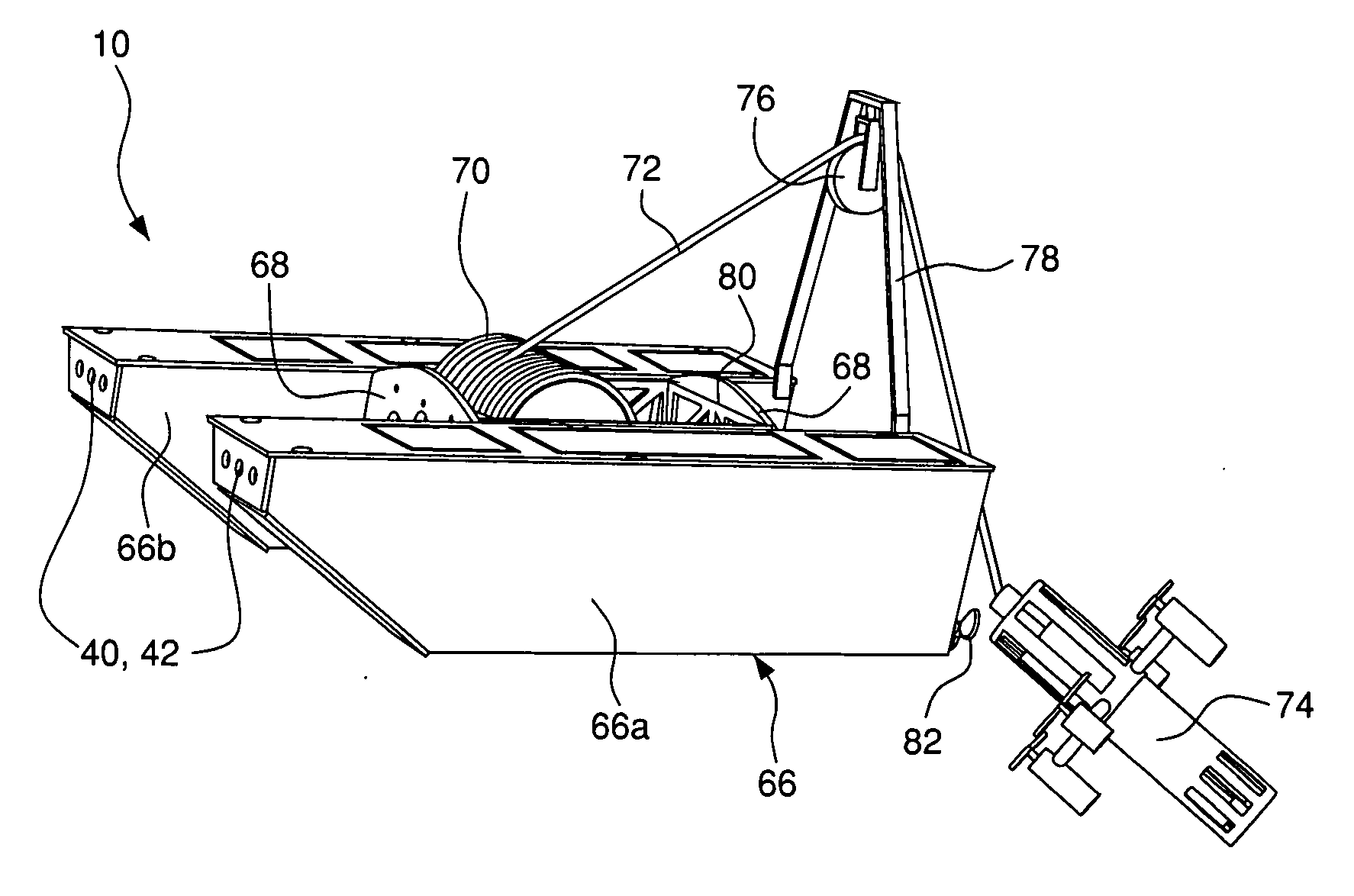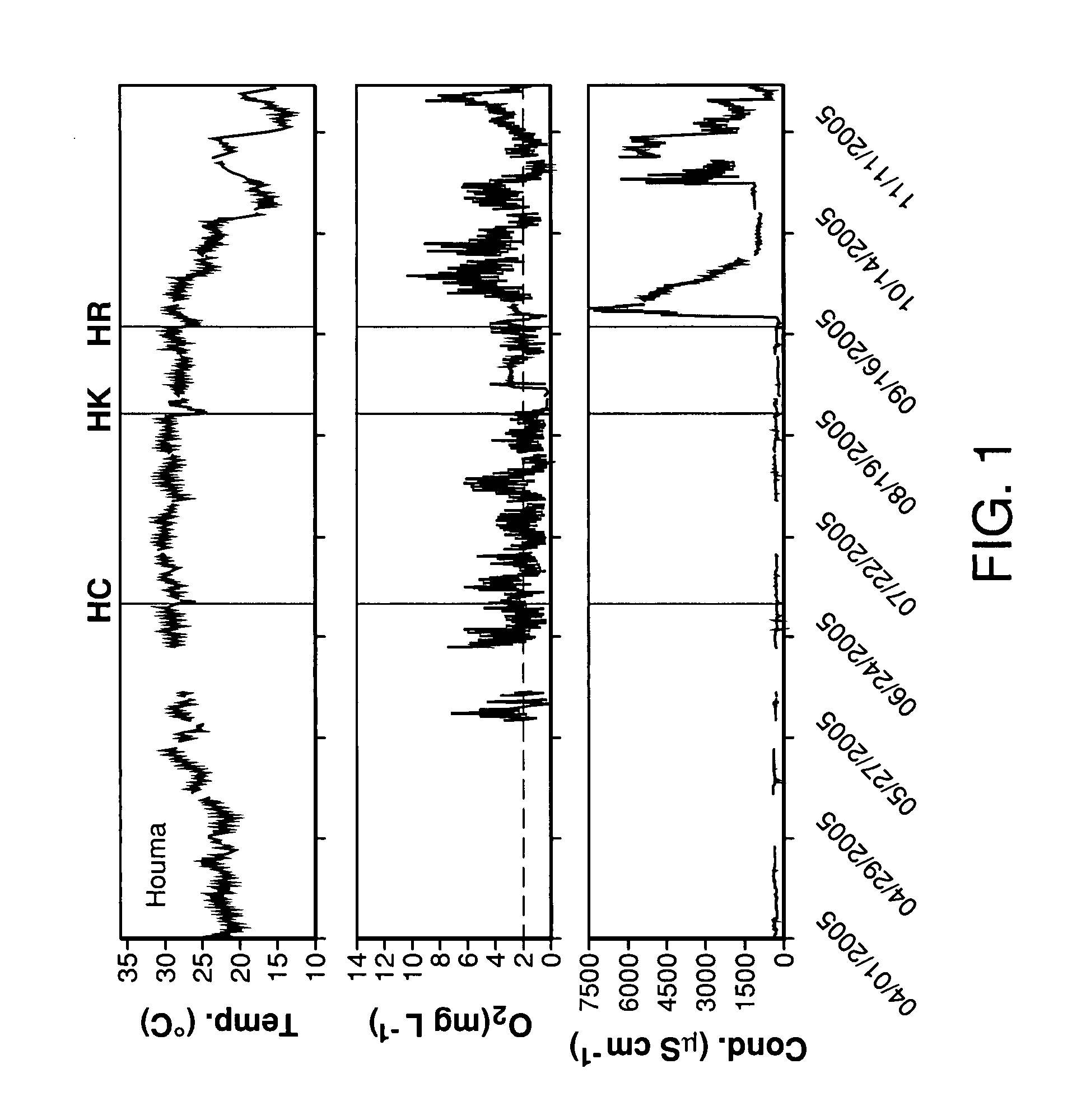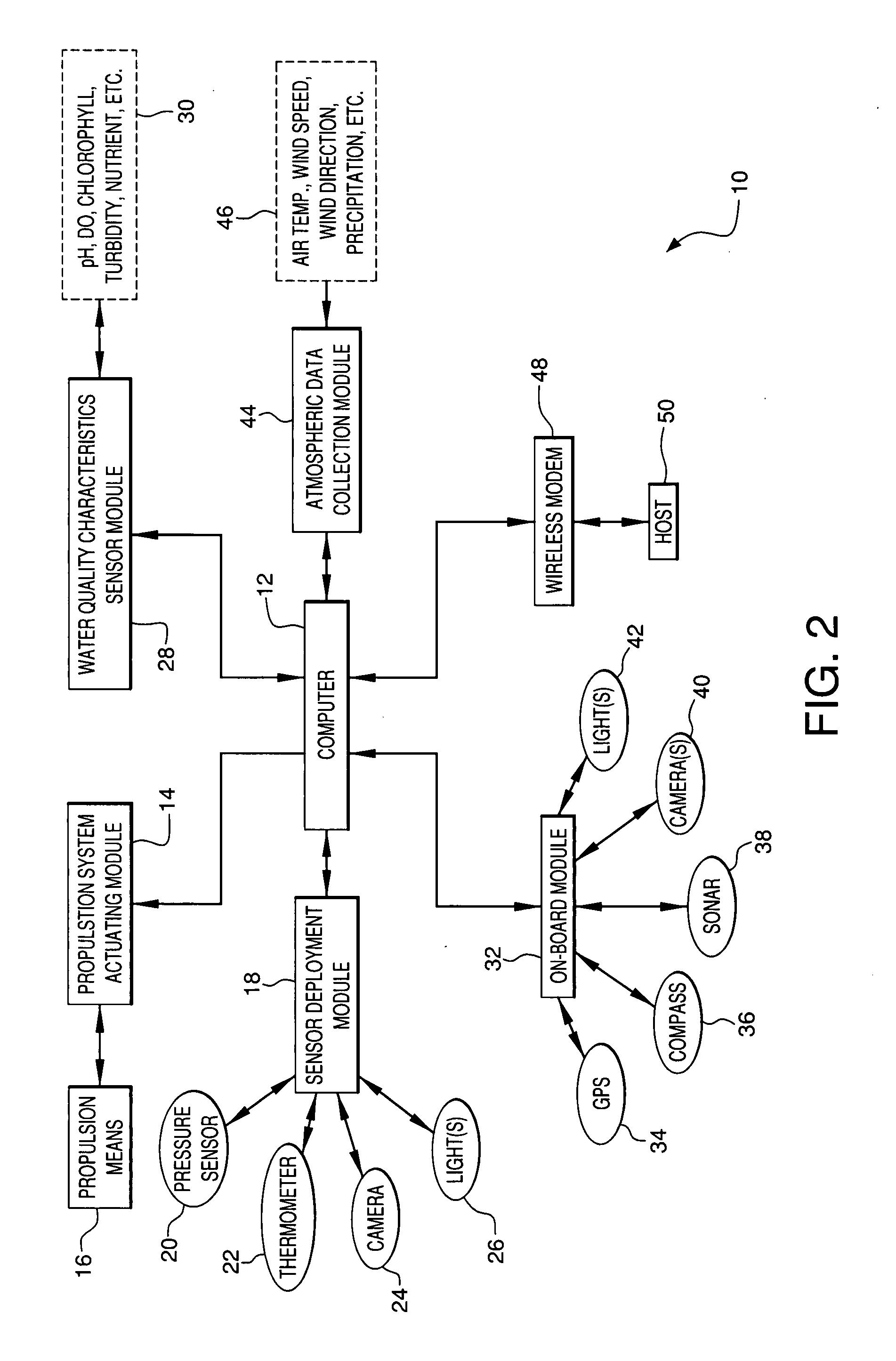Interactive mobile aquatic probing and surveillance system
- Summary
- Abstract
- Description
- Claims
- Application Information
AI Technical Summary
Benefits of technology
Problems solved by technology
Method used
Image
Examples
Embodiment Construction
[0044]In this regard, from years 2001-2006 faculty and students at the Louisiana Universities Marine Consortium monitored inland waters of southern Louisiana. Included in that research was a fifteen-month study of five sites along the Bayou Terrebonne-Bayou Petit Caillou corridor, a 78 km stretch from Thibodaux, La., to Cocodrie, La. These waterways are typically shallow (<2 m), slow moving and are severely impacted by hydrologic modification. Five samplers were used to collect certain water characteristic data (temperature, depth, dissolved oxygen, pH and conductivity) from fixed locations and depths at 30-minute intervals. The samplers were retrieved every two weeks for calibration and data retrieval. Those emplacements have been invaluable in identifying seasonally persistent hypoxia in two locations and the impacts of hurricanes on inland water quality.
[0045]FIG. 1 graphically depicts certain water characteristics detected at one of those sites spanning a period of approximately...
PUM
 Login to View More
Login to View More Abstract
Description
Claims
Application Information
 Login to View More
Login to View More - R&D
- Intellectual Property
- Life Sciences
- Materials
- Tech Scout
- Unparalleled Data Quality
- Higher Quality Content
- 60% Fewer Hallucinations
Browse by: Latest US Patents, China's latest patents, Technical Efficacy Thesaurus, Application Domain, Technology Topic, Popular Technical Reports.
© 2025 PatSnap. All rights reserved.Legal|Privacy policy|Modern Slavery Act Transparency Statement|Sitemap|About US| Contact US: help@patsnap.com



